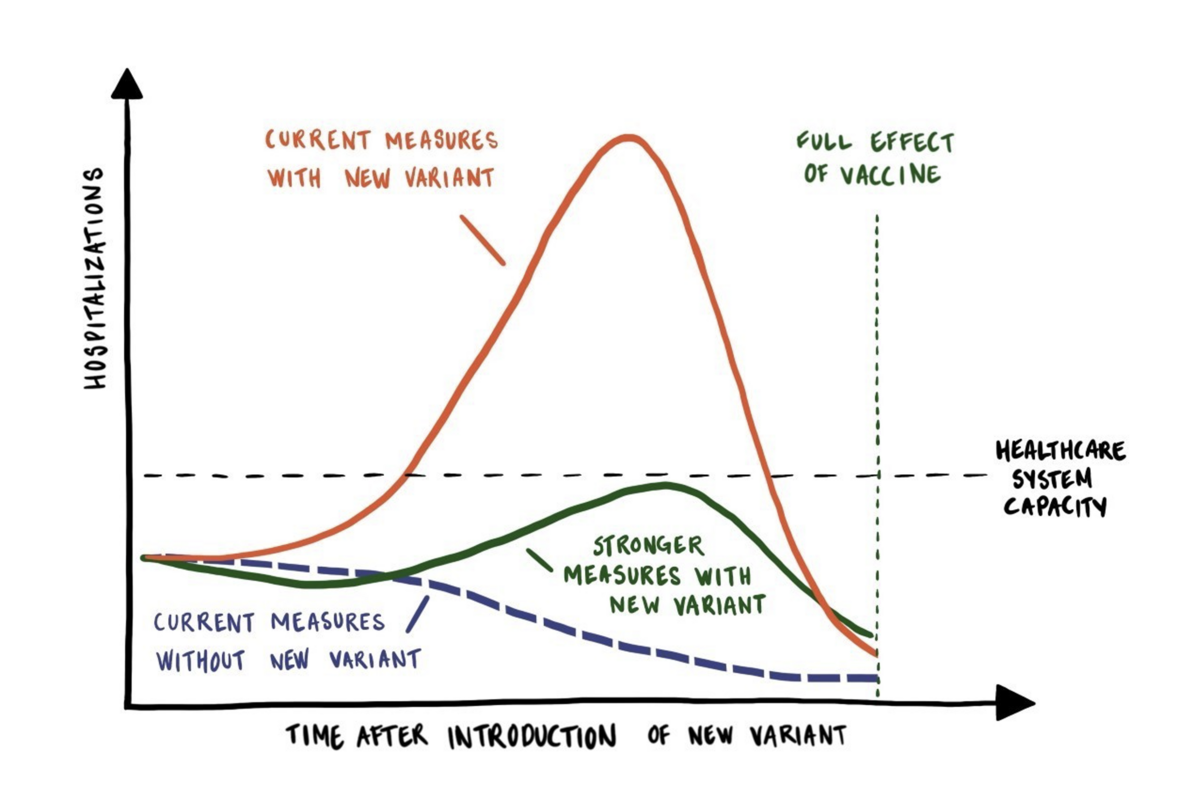COVID-19: Fatigued publics are motivated by hope
New research shows that public health authorities should focus on building long-term hope during the pandemic. If new variants of coronavirus emerge, it will be important not just to appeal to fear but to induce hope, researchers argue.

The emergence of new variants of coronavirus may continue to threaten the capacity of healthcare systems. If strong measures are necessary, how can health authorities communicate effectively to motivate fatigued citizens?
Danish researchers have investigated this question using an experiment involving over 3,000 individuals.
The answer is that authorities can motivate citizens to engage in protective behaviour by inducing hope in the population.
“It is key to provide long-term, actionable advice about how to deal with the threat.”
Michael Bang Petersen, professor of political science at Aarhus BSS, Aarhus University.
’Buying time’ instead of ’flattening the curve’
The researchers based their study on the visualisation of red and green curves shared worldwide in spring 2020, illustrating the need to flatten the epidemic curve to avoid a collapse of healthcare systems.
“We no longer need to simply ‘flatten the curve’, delaying the infection of exposed groups and allowing the healthcare systems to keep up. In the face of new waves of infection, we may rather have to ‘buy time’ until boosters, updated vaccines or new treatments can be rolled out and take effect,” says Michael Bang Petersen.
To help people understand the idea of 'buying time', the researchers adapted the 'flattening the curve' graph to a situation where the roll-out of a vaccine competes against new variants of coronavirus.
The graph depicts how new and highly infectious variants of coronavirus threaten healthcare systems, but also how vaccines offer hope for the future. And hope is crucial to the authorities’ public health communication, the researchers demonstrate in the study, using this particular visual communication aid. ILLUSTRATION: Ene Gro Stubsgaard/Aarhus University.
“If new deadly variants emerge, stronger measures may be needed to flatten the curve. Fatigued populations have a hard time coping with this development. In this situation, our research shows that it is important to not just focus on the threat of the new variant. It is key to provide long-term, actionable advice about how to deal with the threat. We find that building hope facilitates public support better than appealing to fear,” says Michael Bang Petersen.
In the experiment, one group of participants was exposed to the graph communicating hope. Another group was exposed to a graph leaving out the effect of the solution, only depicting the threat in the form of a growing number of hospitalisations. And the result was clear. The hope-inducing graph helped people to better understand why they need to adhere more strongly to the authorities’ guidelines and why strong measures are required.
“Our experiment indicates that health authorities should not just communicate how the epidemic curves skyrocket as a consequence of new variants. Fear alone is not useful. People need to have hope, too,” says Michael Bang Petersen.
COVID-19 infection: It probably won’t happen to me
Surveys in eight Western democracies
The researchers find that there is an urgent need for effective public health communication. They have conducted surveys in eight Western democracies, which have already seen a surge of new and highly infectious variants within their borders: The US, the UK, Sweden, France, Italy, Hungary, Germany and Denmark. 83 per cent of all respondents have heard about the new variants, but only 58 per cent report adhering more strongly to health advice as a consequence.
“This highlights the need to rethink current public communication, which often focuses more on the threat and less on the solutions. We are in the third year of the pandemic. Fatigue is rampant, and the discussions during the current omicron wave show how important effective health communication is. Our study has a key message to health authorities in this regard: Help people envision how we pull through,” says Michael Bang Petersen, who also advises the Danish government on handling the corona crisis.
He has conducted the experiment together with:
-
Lasse Engbo Christensen and Sune Lehmann, Technical University of Denmark
-
Rebecca Adler-Nissen, University of Copenhagen
-
Alexander Bor, Marie Fly Lindholt, Frederik Jørgensen and Andreas Roepstorff, Aarhus University
Facts about the study
Type of study | Experimental study conducted in the United States. Observational study conducted in the United States, Denmark, Sweden, Germany, France, Italy, Hungary and the United Kingdom. | |
External collaborators | None | |
External funding | Carlsberg Foundation | |
Conflict of interest | None | |
Other | None | |
Link to the scientific article | ||
Contact information | Professor of political science, Aarhus BSS, Aarhus University |
